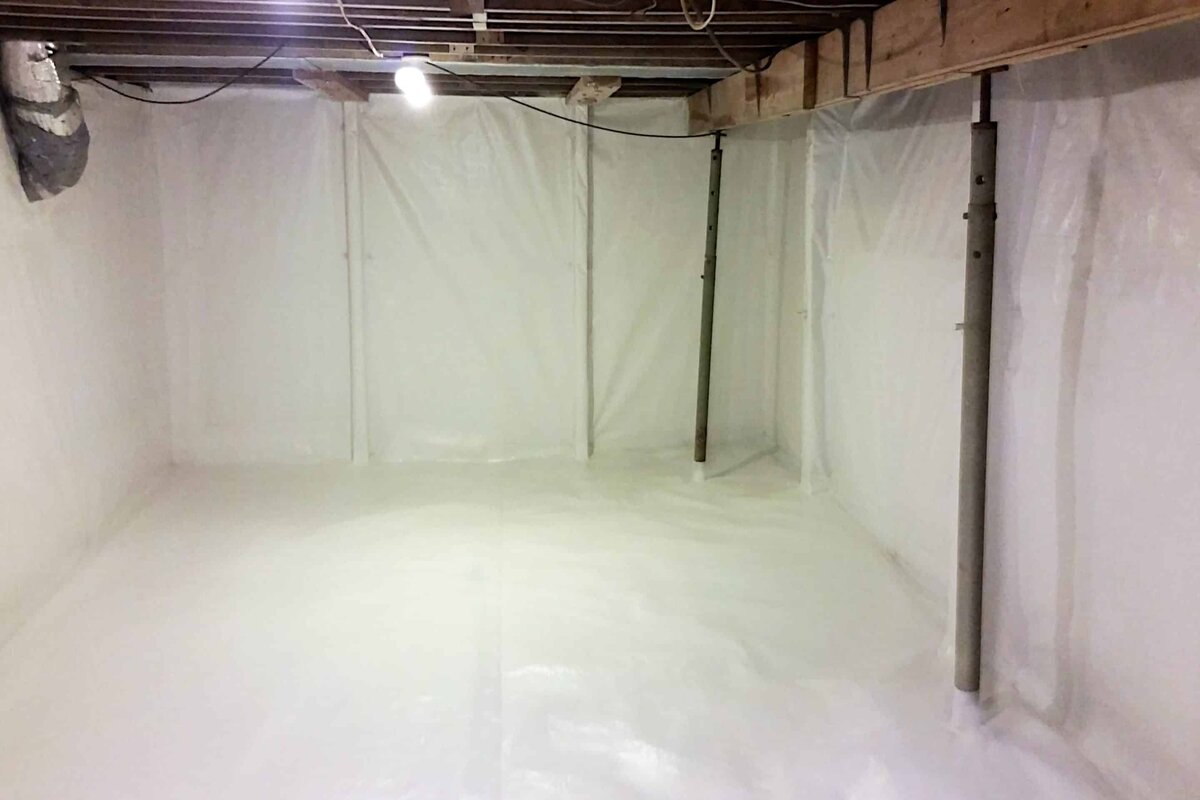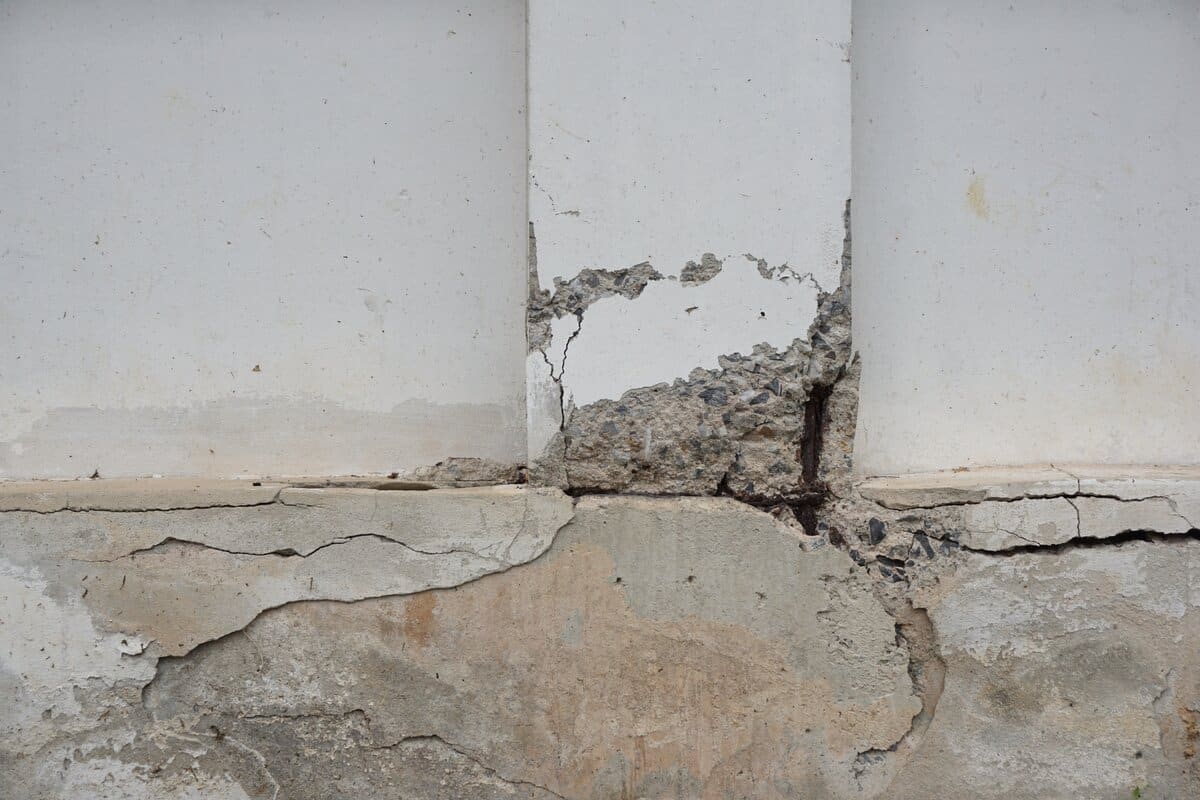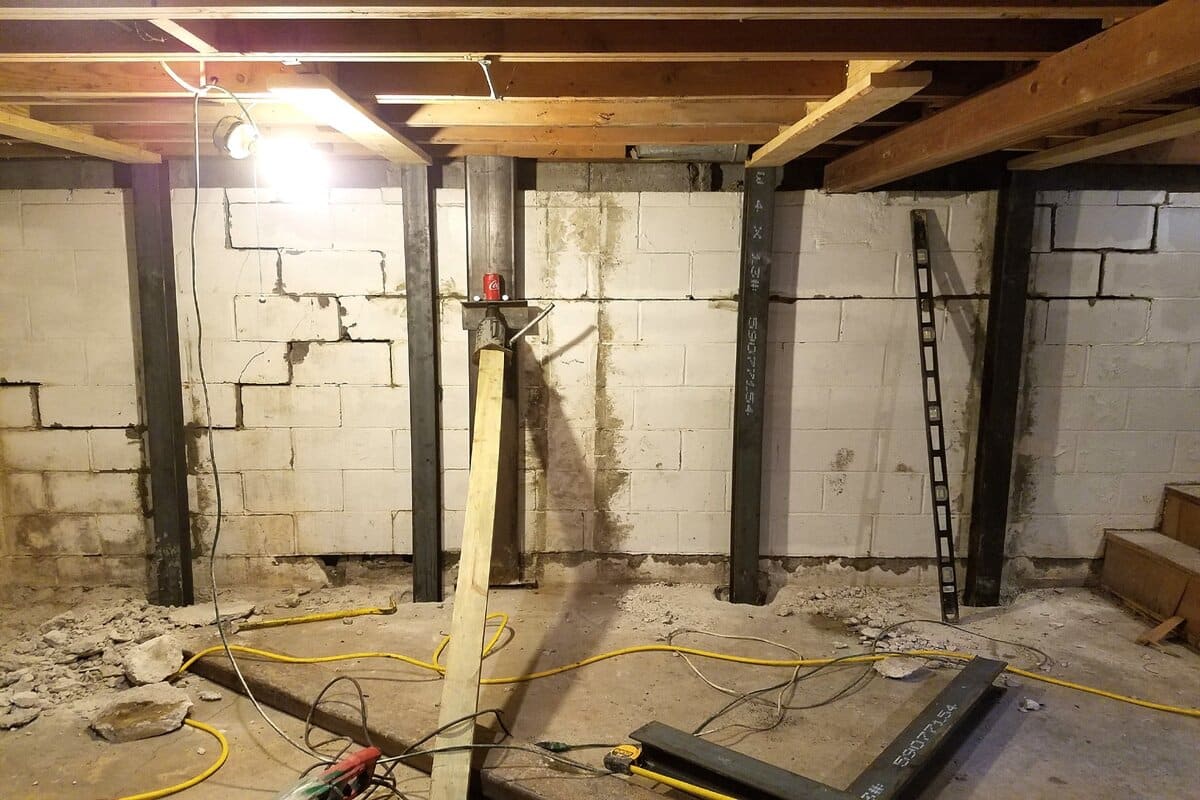Excess water pooling in your yard or seeping into your basement can lead to serious structural issues and costly repairs. At Foundation 1, we provide drainage solutions that protect your home. One of the most common options homeowners consider is a French drain. But what is a French drain, and how effective is it in solving water issues?
What is a French Drain?
A French drain is a trench filled with gravel or rock that contains a perforated pipe designed to redirect surface water and shallow groundwater away from problem areas. This system helps prevent water from accumulating near your home’s foundation, in your yard, or in other low-lying spots where drainage is an issue.
French drains are often used to manage surface groundwater rather than deep groundwater, making them a solution for standing water rather than full-scale waterproofing. However, many homeowners misunderstand their purpose, assuming they provide a permanent fix when they are often a temporary solution to a larger water issue.
How Do French Drains Work?
A French drain works by allowing water to enter the gravel-filled trench and flow into the perforated pipe. The pipe is installed with a slight slope, allowing gravity to guide the water to a designated discharge point, such as a storm drain, dry well, or a lower part of the yard.
While effective, French drains only address a portion of the water issue. In many cases, it handles just 10% of the water, while the other 90% bypasses the system entirely. If installed incorrectly or in an inappropriate location, a French drain may not solve the root cause of your drainage problem.
Common Misconceptions and Issues
Many homeowners assume that once a French drain is installed, it will continue to function indefinitely. However, this is far from the truth. French drains do not last forever, and over time, they can become clogged with sediment and debris, reducing their effectiveness.
Another common issue is improper placement. French drains that are not installed in the correct location will not work as intended. For example, if a homeowner installs a French drain in an area that does not collect water, it serves no purpose.
Problems with Improper Installation
A French drain must be installed correctly to function properly. If not, homeowners may experience the following issues:
- Clogging: Over time, sediment and debris from nearby roofs, gutters, or soil erosion can accumulate in the perforated pipe, blocking water flow and rendering the system ineffective.
- Wrong Placement: A French drain installed in the wrong location will not collect water efficiently. It should be placed at the lowest point where water naturally pools.
- Insufficient Slope: If the drain is not sloped correctly, water will not flow properly through the system, causing standing water and potential backups.
- No Surface Drains: Without surface drains, the system is more likely to clog and fail.
To avoid these problems, professional installation is essential.
Ideal Installation Locations
A French drain should be installed where water naturally collects and pools. Ideal locations include:
- Between two houses where water accumulates due to roof runoff and downspouts.
- At the base of a slope in the yard to redirect water away from the foundation.
- Around a home’s foundation to help prevent basement flooding.
If water runoff from a neighbor’s property is affecting your yard, a French drain can help redirect that excess water to a more appropriate location. However, it is essential to ensure that the system is installed correctly to avoid long-term issues.
Maintenance and Surface Drains
Many homeowners are unaware that French drains require ongoing maintenance. A well-functioning system needs periodic checks and cleaning to prevent sediment buildup.
One way to improve the efficiency of a French drain is by incorporating surface drains. Surface drains help by:
- Collecting excess water in low spots before it reaches the French drain.
- Providing accessibility for maintenance, allowing for easier inspection and cleaning of the drainage system.
For instance, if you have a 40-foot-long French drain, installing surface drains every 10 feet provides convenient access points for clearing blockages and ensuring proper water flow.
Misunderstandings About French Drains
Many homeowners believe they have a French drain when they actually have a buried pipe that does not function as intended. A true French drain requires a perforated pipe, gravel, and proper drainage slope. Without these components, it is merely a pipe buried underground, which can quickly fill with dirt and stop working.
We often encounter situations where customers assume their French drain is still effective, only to find that it is clogged or improperly installed. Regular maintenance and professional assessment can prevent costly drainage failures.
In Summary
French drains are a useful solution for managing surface water, but it is not a permanent fix for every drainage issue. Proper installation, maintenance, and the inclusion of surface drains are critical for ensuring its effectiveness.
If you are experiencing water pooling or drainage problems, contact us at Foundation 1 for a professional evaluation and the best solution tailored to your needs.




